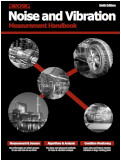The difference between Low noise and Non-Low noise accelerometer cables.
It is important to use the correct cable when using accelerometers.
A charge output accelerometer must be used with a LOW NOISE cable. The term low noise refers to the cable’s ability to reduce triboelectric noise (otherwise known as motion-induced noise) rather than electrical noise. This reduction is accomplished by the inclusion of a graphite or silver wrap on the outer surface of the inner dielectric layer. If a non-low noise cable is used movement of the cable will add an additional signal to the data causing errors in data analysis.
An IEPE accelerometer is much more forgiving and can be used with almost any type of cable. The more traditional coaxial cable is commonly used for these accelerometers. If using both Charge and IEPE accelerometers within your facility. It is best to standardise all cables to be low noise types to avoid potential errors in using the wrong cable.
For more details about cable selection and for a practical demonstration of triboelectric noise please visit our Youtube page.
Further Information
You can find out more about the DJB range of accelerometers, cables, instrumentation and accessories on our website. Or download the DJB Technical Reference Guide.
Latest posts by DJB Instruments (see all)
- Accelerometer Selection – How To Choose An Accelerometer - February 25, 2022
- Accelerometer Cable Selection - December 6, 2021
- Mass Loading Explained - October 5, 2021





